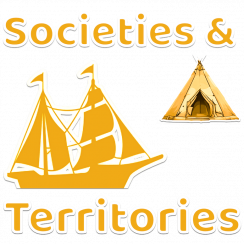All the colonists who came from Europe to settle in America were Christians. But they did not all practice the Christianity in the same way.
In New France, most people practiced their religion according to the rites of the Roman Catholic Church. We call these people Catholics.
In the Thirteen Colonies, there was a wide variety of religious practices. Although they were Christians, these colonists did not accept the rules of the Roman Catholic Church, nor the Pope’s authority. We call these people Protestants. This belief is reflected in the different ways they practice their religion. For example, each person can have a direct connection with God without having to go through the Church. Protestants also refer directly to the Bible without the priest telling them how to interpret it. There are several other differences, like the fact that pastors can marry, something that is forbidden among Catholics.
There were several different groups of Protestants in the Thirteen Colonies. In the Southern Colonies, there were more Anglicans, which was also the main religion in England. The Northern Colonies had more Puritans, or Congregationalists. In the Middle Colonies, Pennsylvania had been founded by members of the Society of Friends; pacifists nicknamed Quakers. The German immigrants who joined them had also brought along another practice, Lutheranism. Meanwhile, the Dutch colonists in New York were Calvinists.
There were some Catholics in Maryland, but not many. Religious diversity dominated in the Thirteen Colonies and would become even more diverse as the Methodists and Baptists grew. This variety of religions was very different from the situation in New France, where virtually all the colonists practiced the same religion: Catholicism.
Author: Léon Robichaud
See also – Traces of the past:






